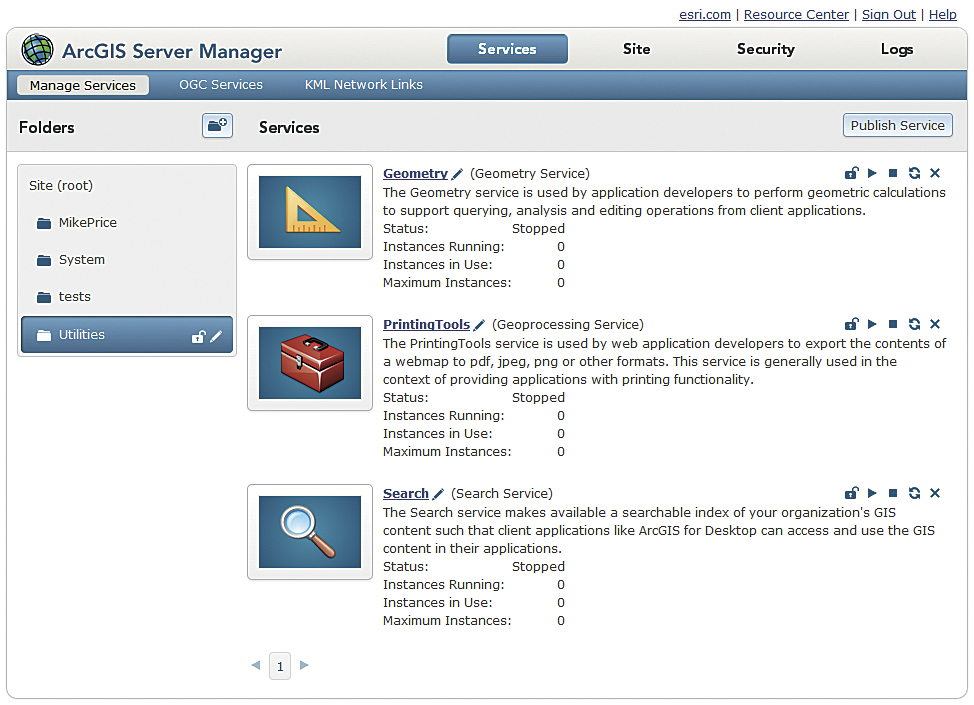Summary
Instructions provided describe how to connect to a license manager for ArcGIS Desktop 10x via the ArcGIS Administrator.
The ArcGIS Administrator allows a concurrent use work environment to be defined. This document only provides information regarding ArcGIS Desktop 10x Concurrent Use Licenses.
The Concurrent Use (or Floating) License Manager allows a group of users to share available license seats on a network. The licenses are managed by a server which limits the number of concurrent users to the number of license seats defined in the license file. This system consists of a license manager application that can be installed on a local workstation,or installed on a server that is accessible to workstations on the network. In order to connect to a license manager, it must be defined within ArcGIS Administrator.
Arcgis Licence Server Port
The licenses are managed by a server which limits the number of concurrent users to the number of license seats defined in the license file. This system consists of a license manager application that can be installed on a local workstation,or installed on a server that is accessible to workstations on the network. For example, FME may use a random port, but ArcGIS may use a fixed port, and a conflict will occur if the same port is in use. To specify Floating License Server Ports Edit the safe.lic file in your FlexServer directory so that yyyy on the VENDOR line is the port you want to open for the communication to the client machine running FME.
Procedure
Set the License Manager following installation of ArcGIS Desktop 10
- After the installation of ArcGIS Desktop 10, select the required Concurrent Use product in the ArcGIS Administrator Wizard.
- Choose the Define a License Manager now radio button.
- Type or click the Browse button to specify the name or IP address of the license manager.
- Once the license manager has been set, click OK to close the ArcGIS Administrator Wizard.
Applications can now be run using this license manager.

Define the License Manager at a later time after installation

- Launch the ArcGIS Administrator and select the Desktop folder.
- Select the concurrent use product.
- Click Change, enter the name of the license manager, and click OK. The name of the license manager is the host name of the machine where the license manager is installed.
- Click OK in the Change License Manager dialog box.
- Click Apply to set the changes without closing the ArcGIS Administrator, or click OK to apply changes and close the ArcGIS Administrator.
Related Information
Last Published: 1/29/2020
Article ID: 000011234
Software: ArcMap 10.5.1, 10.5, 10.4.1, 10.4, 10.3.1, 10.3, 10.2.2, 10.2.1, 10.2, 10.1, 10
Many of today's networks use a firewall for enhanced security from outside threats. Because the license manager uses the TCP/IP protocols, implementing such a firewall can pose problems between the license manager server and the clients connecting to it.
The problem is caused by the firewall often closing or blocking access to the ports the license manager uses to communicate. By default, the lmgrd daemon is set to port 27000. The ARCGIS daemon, on the second line of the file, is not confined to a particular port range. It is dynamic, meaning that it can listen on any available port.
To secure the license management environment and allow you to implement a firewall, you can lock the ARCGIS daemon to a specific port. You can also change the lmgrd daemon from the default 27000 to another port between 27000 and 27009. This range was prespecified for license manager use because of the low traffic in that range.
Procedure
The steps provided require that you briefly stop the license manager. During this time, connections to the license manager may be lost.
- Click Start > Programs > ArcGIS > License Manager > License Server Administrator.
- Click Start/Stop License Server in the table of contents and click Stop.
- Open Windows Explorer and navigate to your license manager installation location (C:Program FilesArcGISLicense10.3bin by default), in which you will see a service.txt file.
The file should look similar to this:
At the end of the SERVER line, you can choose to specify a port number immediately after ANY.


On the VENDOR line, add PORT=####, where #### is a specific port number designated by you, to lock the vendor daemon to that specific port (for example, 1234). After making the changes, your service.txt file should look something like this:
- Save the .txt file.
- From License Server Administrator, click Start.
The vendor daemon is now static, locked to the port specified.
- These ports can now be saved as exceptions in the firewall to allow communication between the license server and the client.
Note:
With ArcGIS License Manager 10.3-10.3.1, a specific port in the range 27000-27009, must be specified for the lmgrd daemon as a requirement for configuring it for use with a portal. The service.txt file found in the install directory (..Program FilesArcGISLicense10.3bin by default) will now include the port 27000 by default after installing ArcGIS License Manager. If ArcGIS License Manager 10.3 was installed as an upgrade from an earlier version, for example over ArcGIS License Manager 10.2.2 and a port such as 27004 was already specified in the earlier install, this port may not be carried over into the new install. In this case, the port will need to be manually re-entered into the service.txt file. If upgrading from ArcGIS License Manager 10.3 to ArcGIS License Manager 10.3.1, then the port information in the Service.txt file will be retained. The lmgrd daemon port is communicated to the portal as part of the exported portal configuration *.json file.
Arcgis License Server Port Firewall
Feedback on this topic?